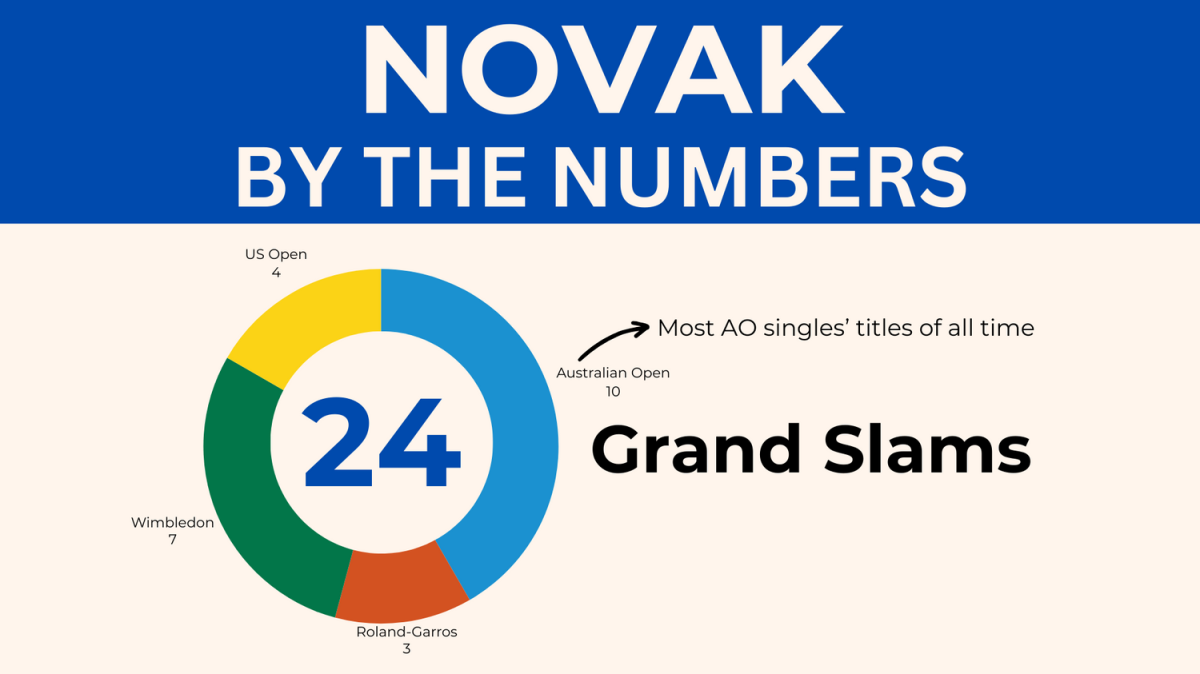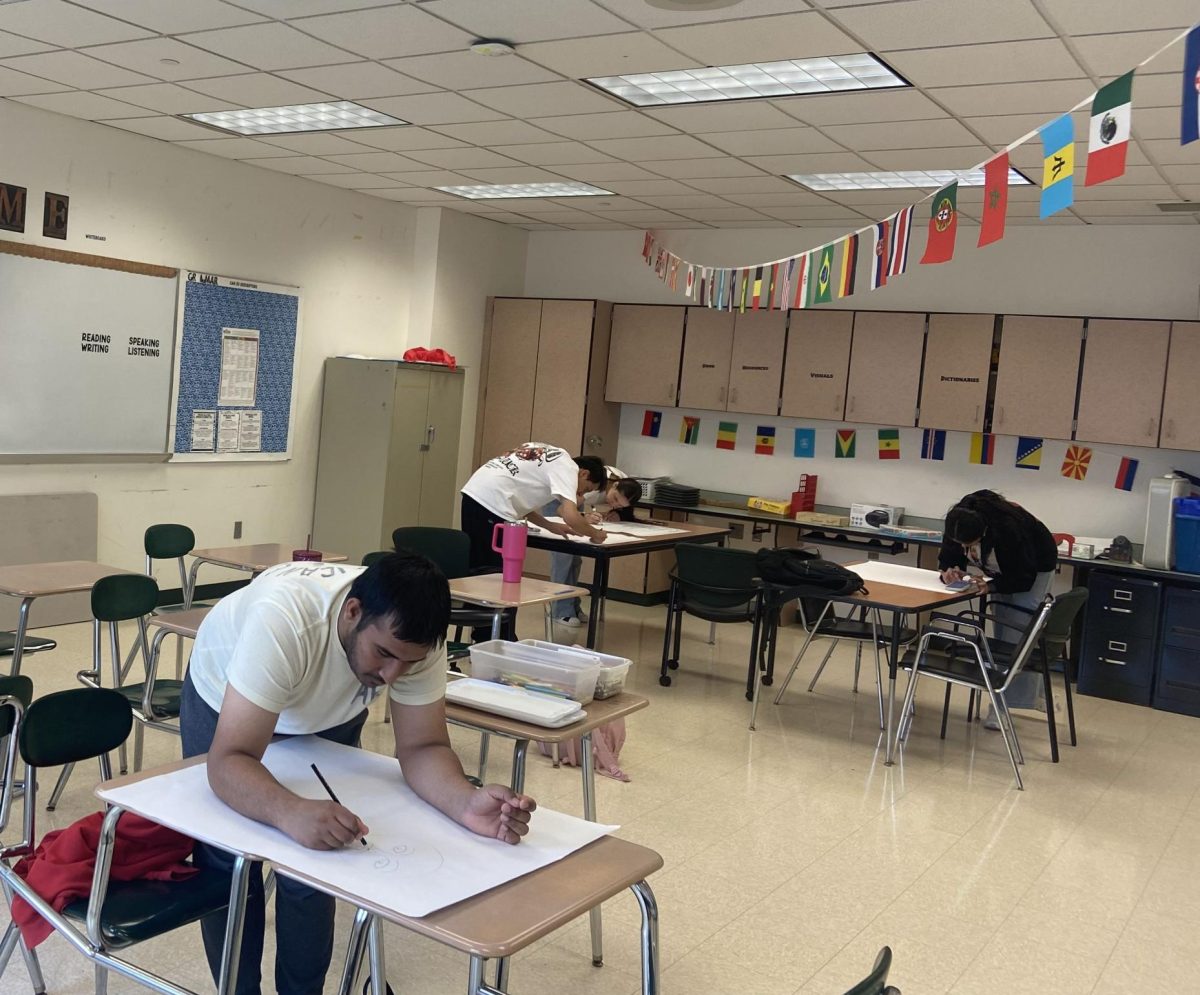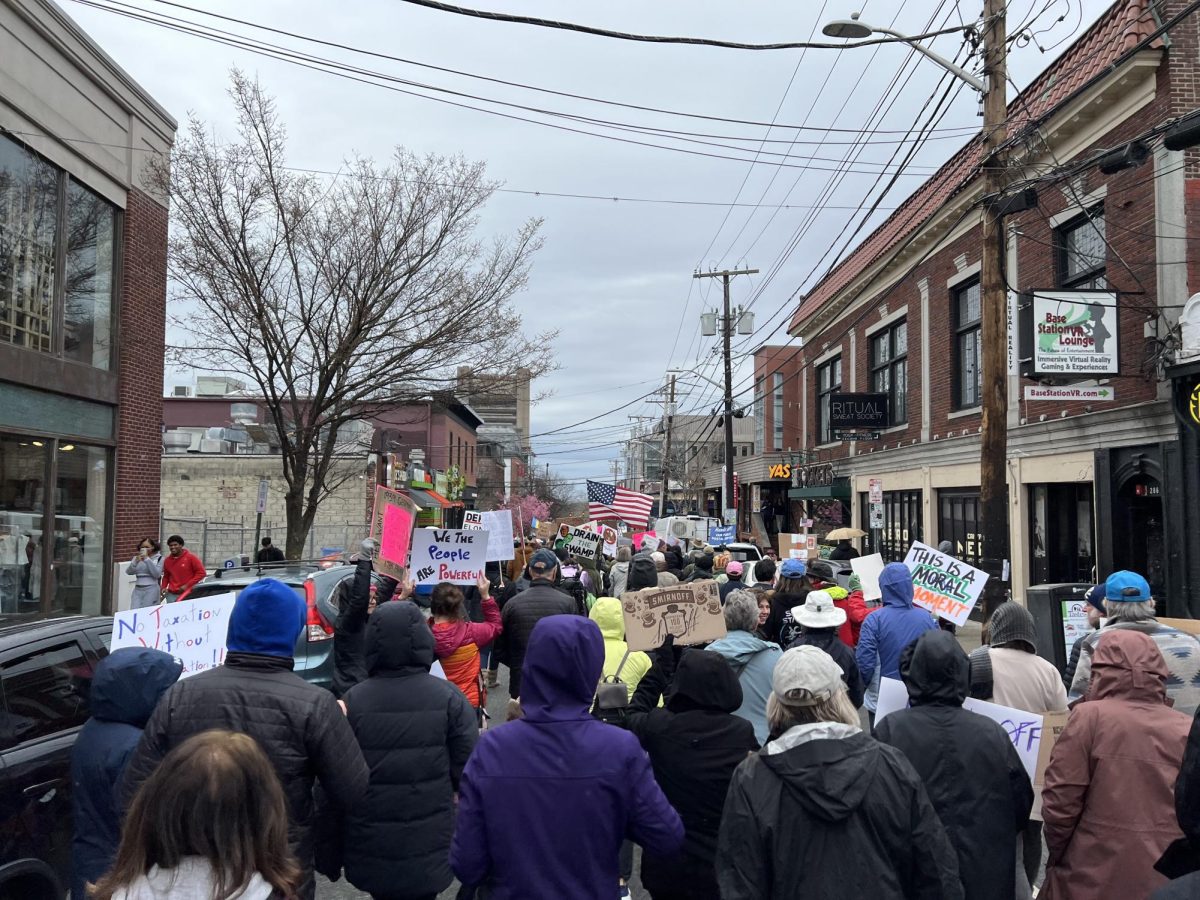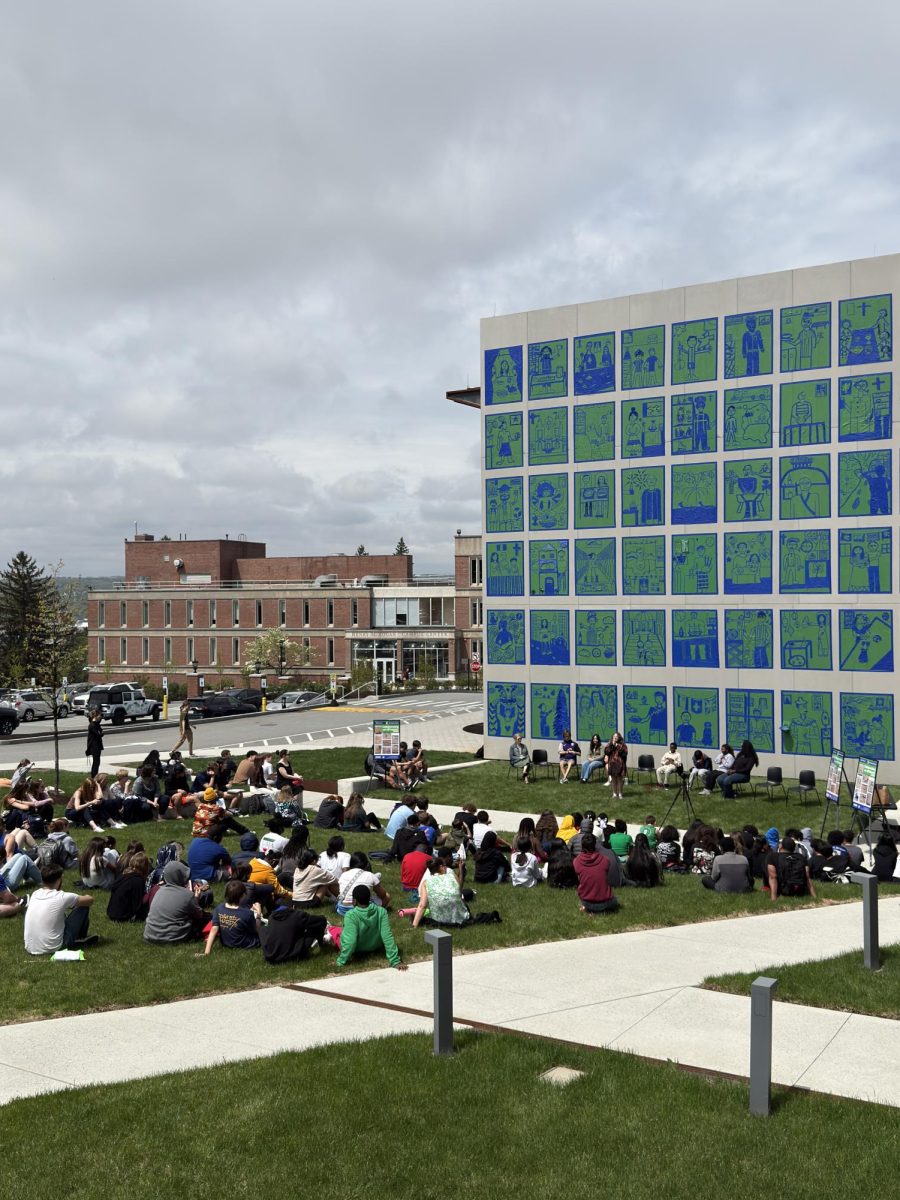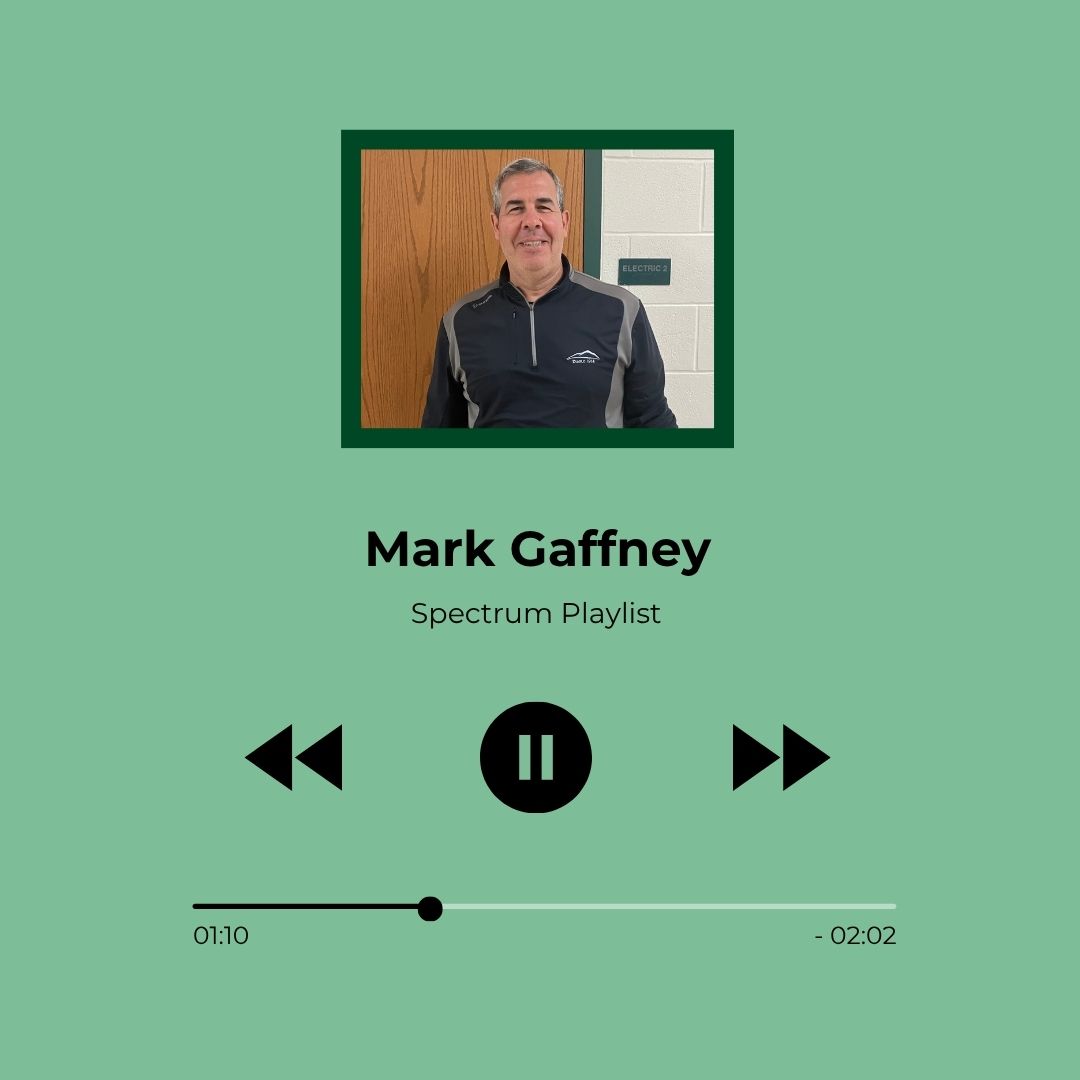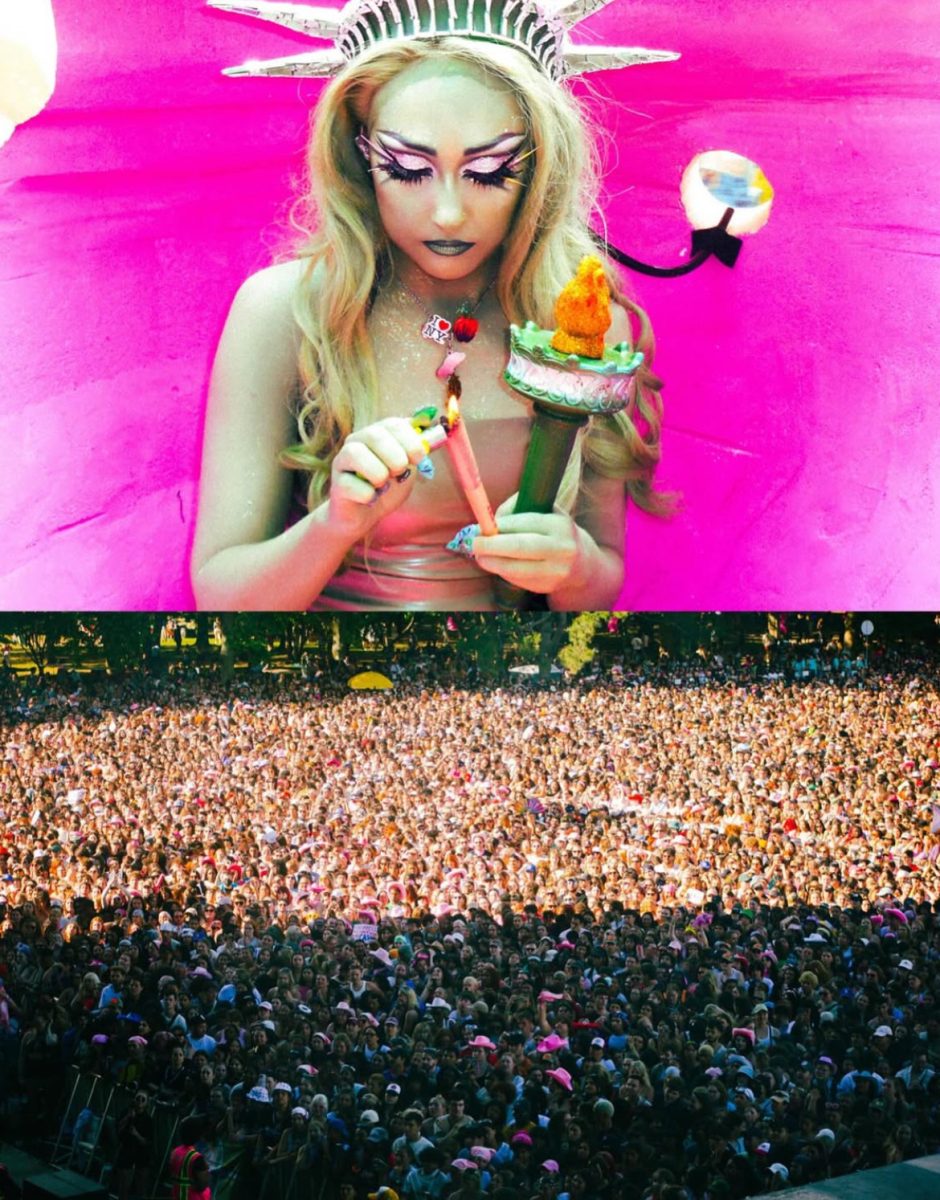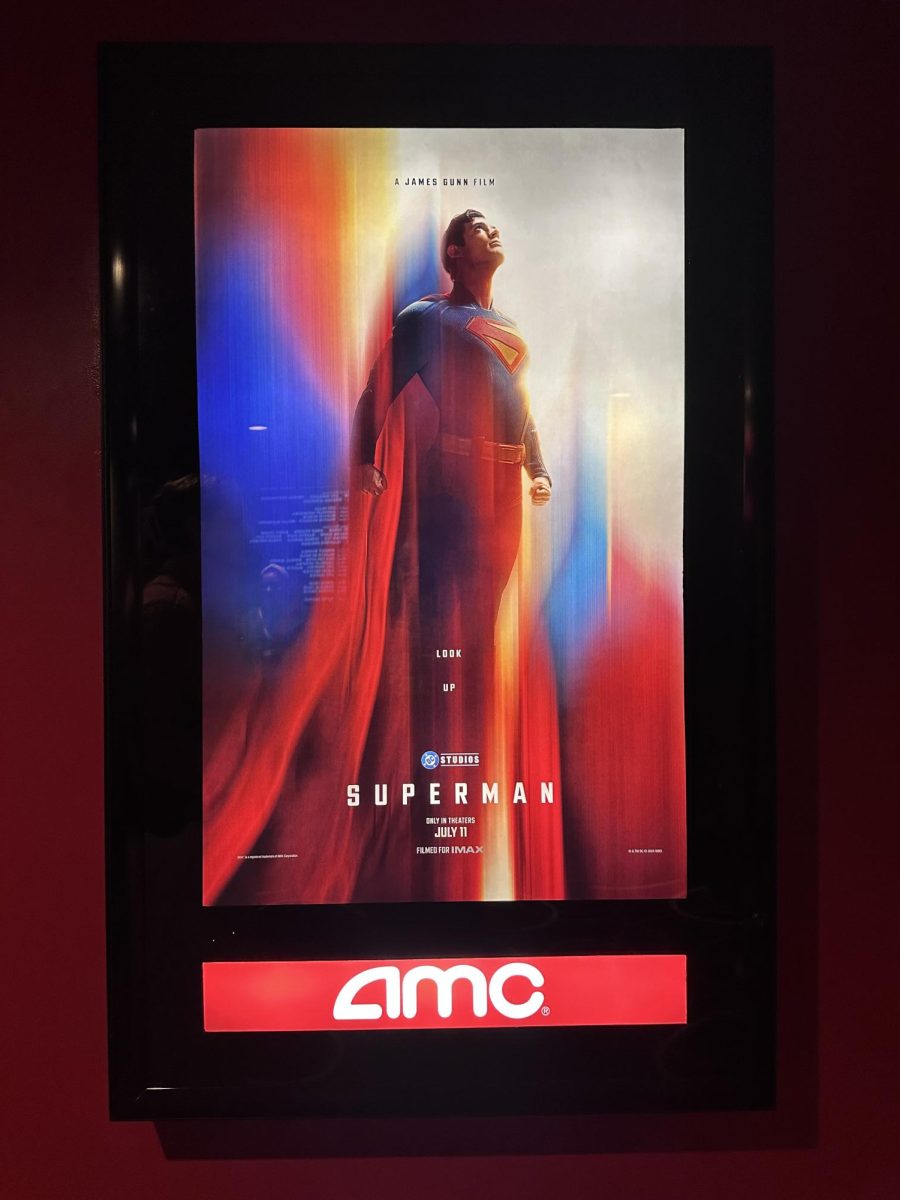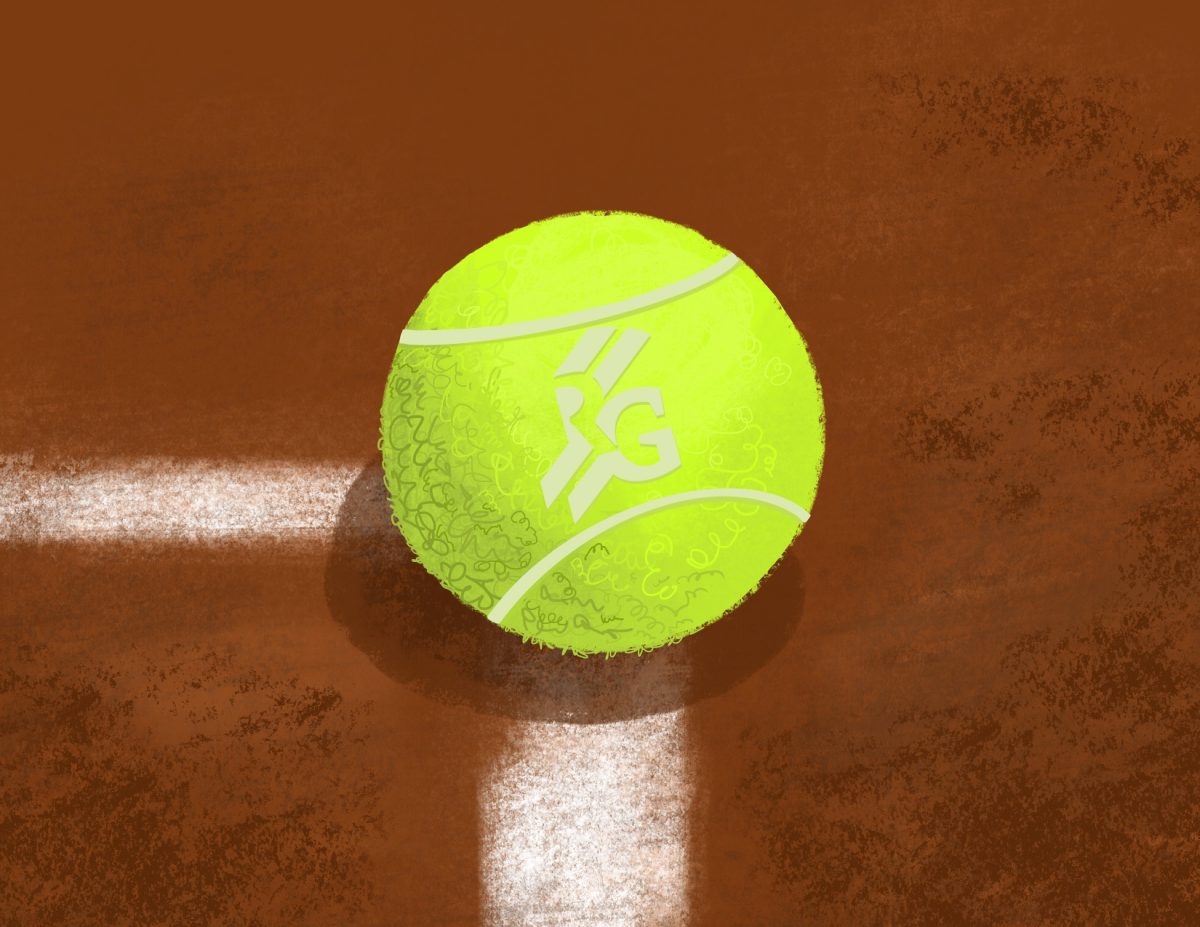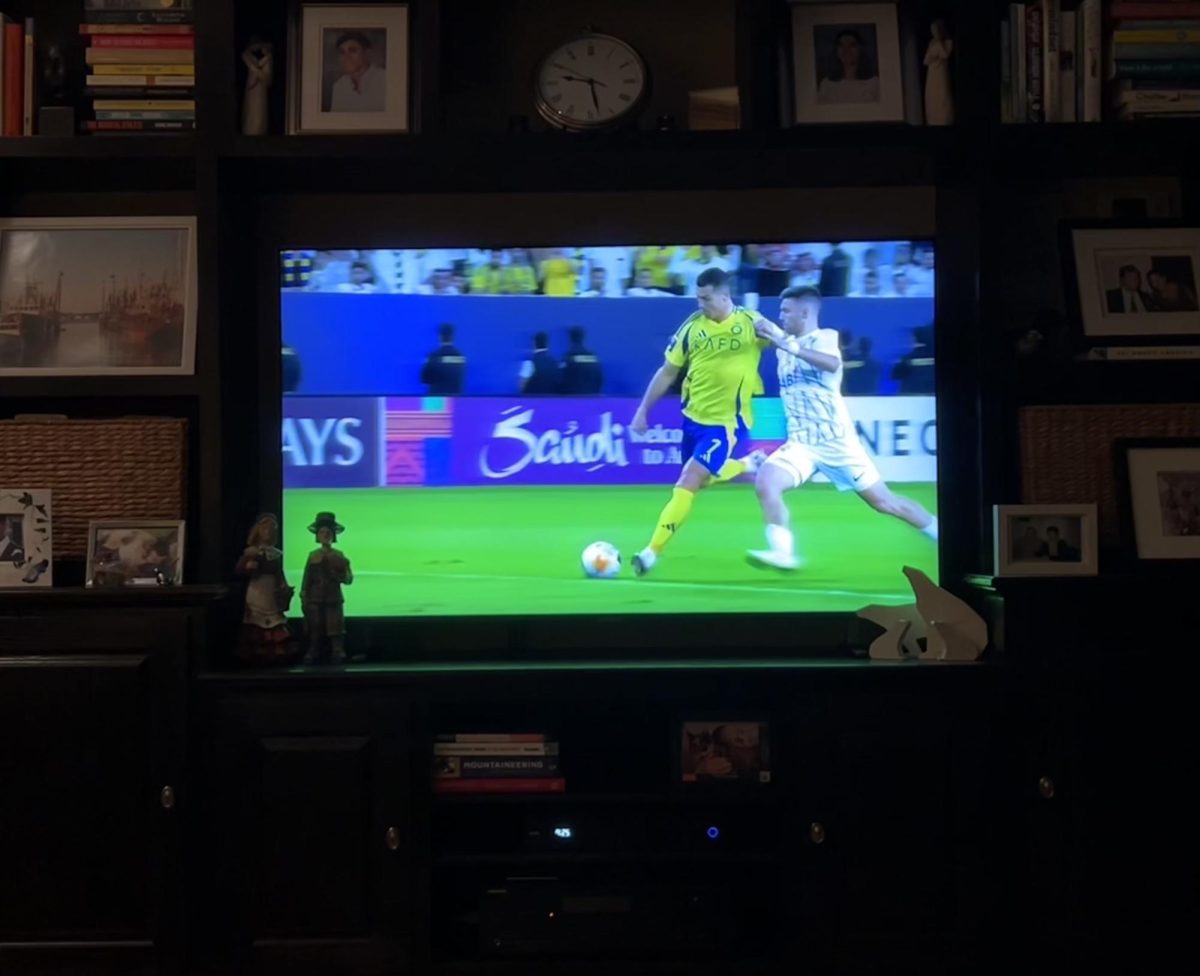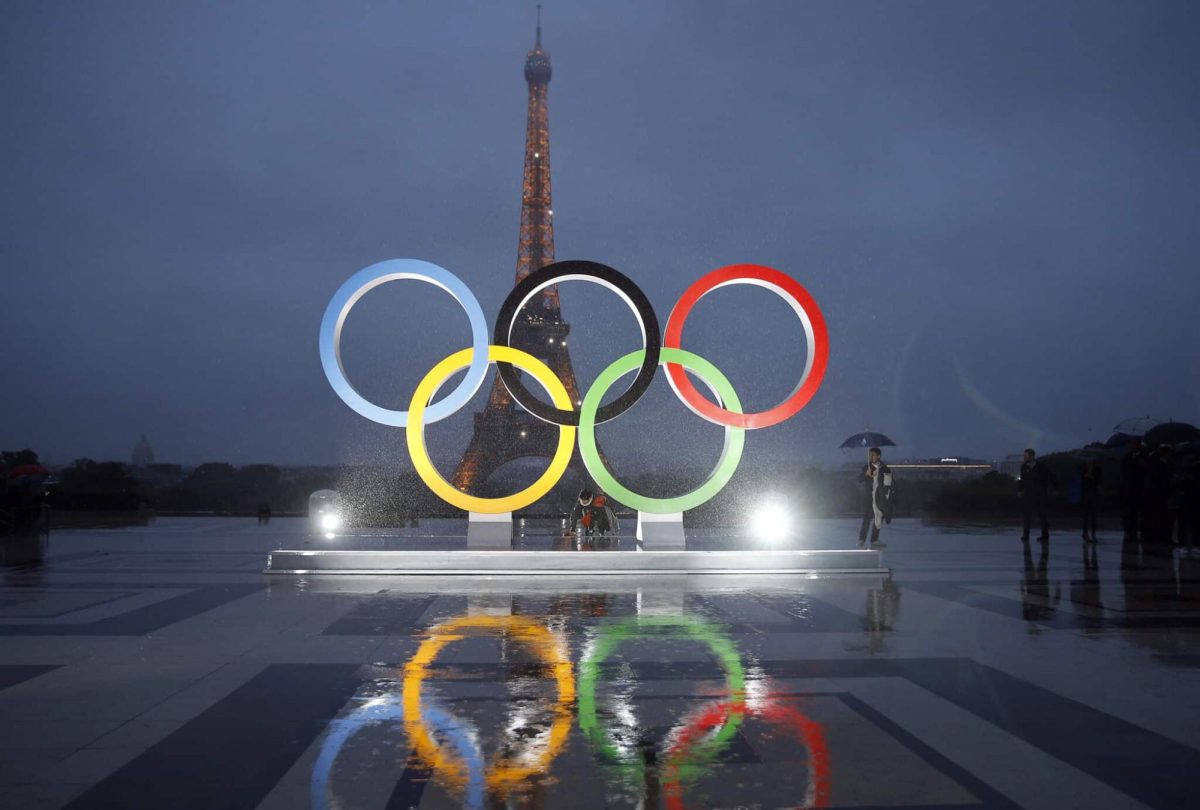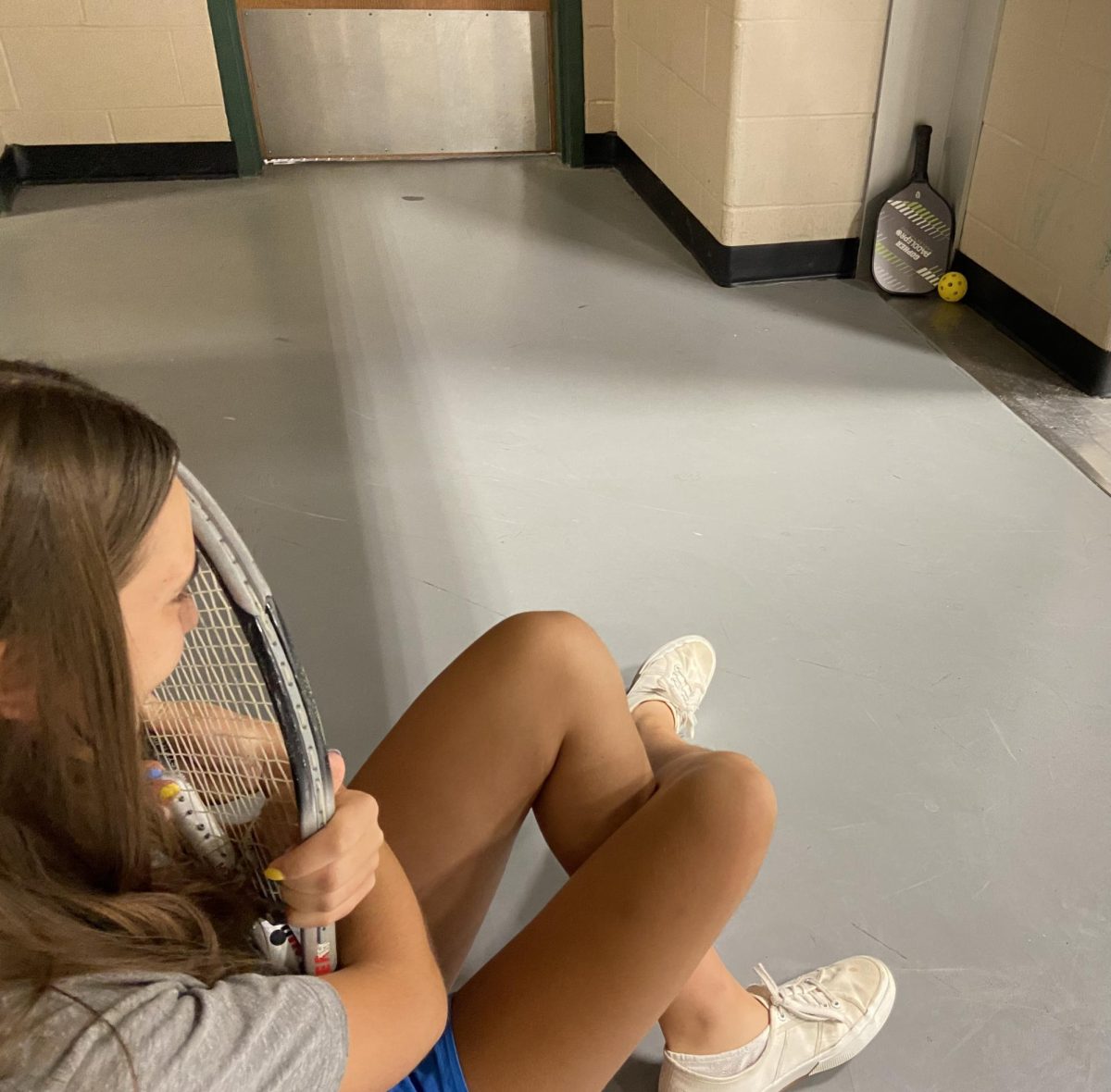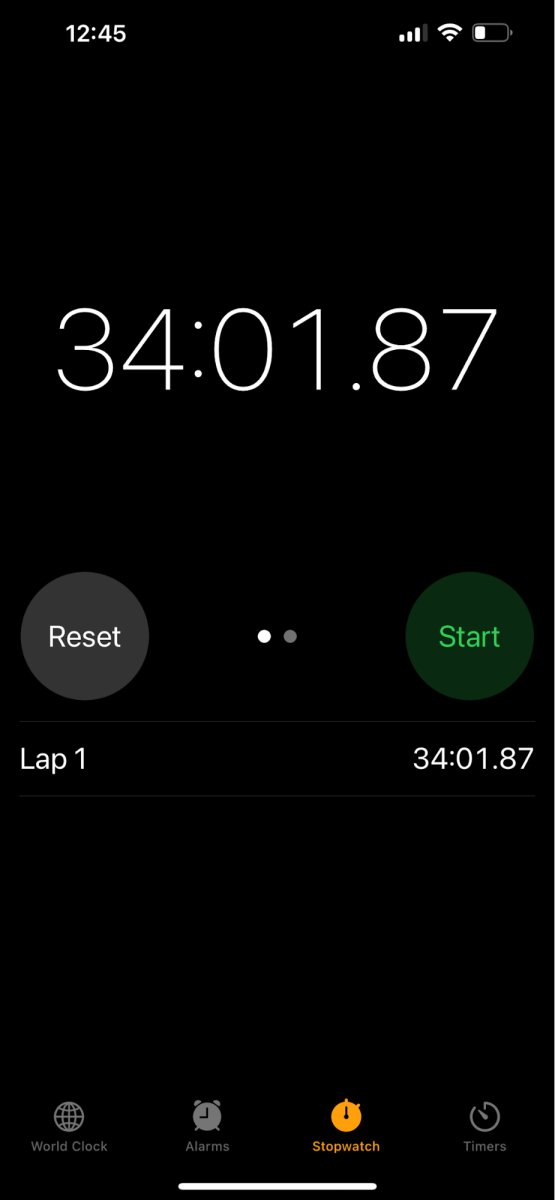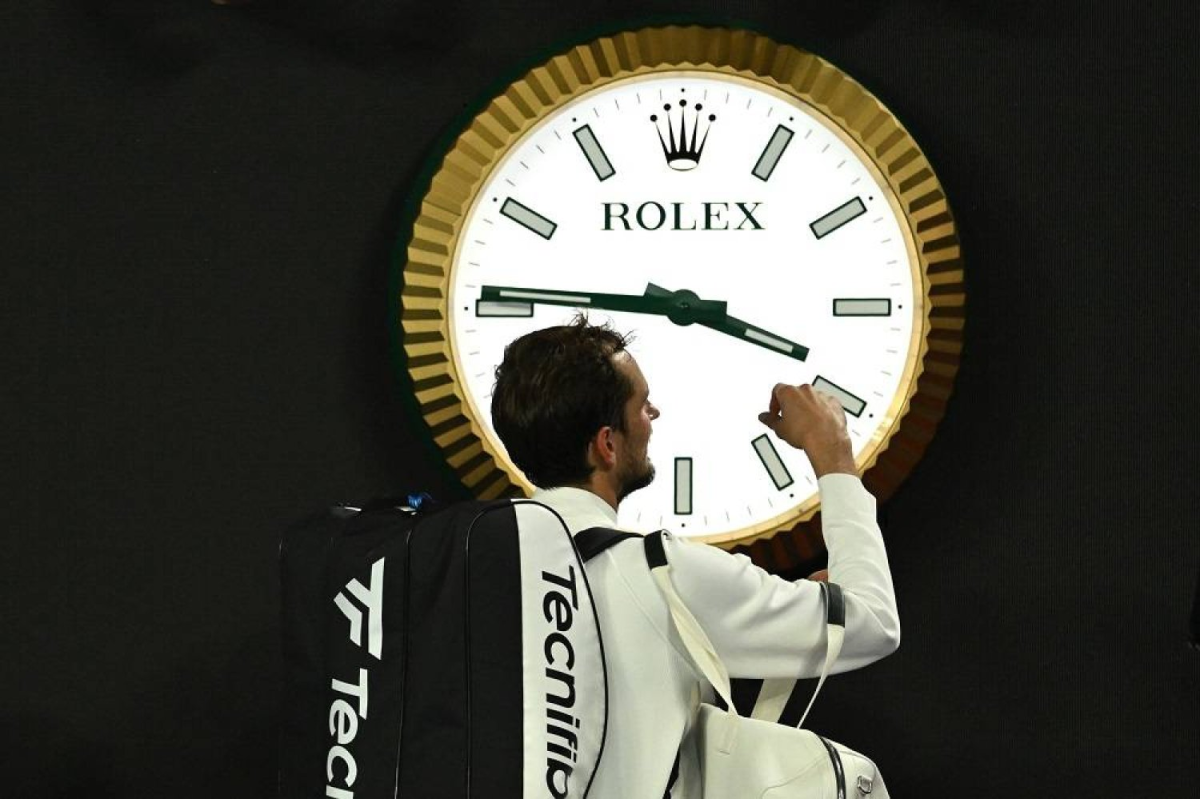World No. 2 Novak Djokovic had every reason to believe he would win Wimbledon. He hadn’t lost a completed match at the tournament in seven years – and on Centre Court, a decade. Plus, he won the first two Grand Slams of the year. At the Australian Open, he tied his Slam record at 22 with Rafael Nadal. He continued his streak at Roland-Garros, where he captured his 23rd title and, as a result, became the male player with the most Slams of all time.
“Another day, another record for you,” runner-up Casper Ruud said during the trophy ceremony. “And another day you rewrite tennis history.”
“I’m beyond fortunate in my life to win 23 times. It’s an incredible feeling,” Djokovic said. But his ambition didn’t end at 23. Three years ago he declared, “If I retired now, I’d be happy with everything I have achieved, but I still enjoy competing, and every tournament I enter gives me so much motivation and joy.” It helps that he’s still in great condition; he’s won 12 Slams since turning 30 years old. Number 24 seemed inevitable.
After gaining a spot in the Wimbledon semifinals, Djokovic was asked how he handles the pressure of being the player to beat, of having a target on his back. “I know that they want to get a scalp, they want to win,” he grinned, “but it ain’t happening.”
As expected, Djokovic marched his way into the final on July 16, 2023. His opponent? World No. 1 Carlos Alcaraz, who was aiming right for the bullseye.
“Spanish Never Die – I’ve Experienced This Before”
– Novak Djokovic
Over the past year, Alcaraz and Djokovic became perfectly contrasted rivals. The tennis world caught something fresh: a young, charismatic showman brimming with panache, a constantly updating highlight reel who rocketed forehands, carved ankle-twisting dropshots, and somehow turned defensive tweeners into winners. His complete, versatile game and infectious grin made him impossible not to like. There seemed to be only two people who could challenge him: Jannik Sinner, and the veteran Djokovic who’s spent his entire career as “the villain” “stealing” titles from the two most likable players in the sport. On court, Djokovic could appear cold and clinical, an athletic machine fueled by victory whose shots are textbook for tennis instructors teaching kids to hit their first backhands.
The wildest contrast is their age gap. Djokovic is a defiantly healthy 36 (which he believes “is the new 26”), while Alcaraz just turned 20 this May. Their matches were quickly marketed as a battle of generations, Big Three versus Next Gen, traditional versus modern. Somehow they’d only played twice: Alcaraz won the semifinals of the 2022 Madrid Masters and Djokovic won the semis of the 2023 Roland-Garros.
Alcaraz’s ability to take on Djokovic made him stand out against his young peers. All players are judged by the ultimate question: you’re good, yes, but can you beat Djokovic? The Next Gen is talented, and a few in particular can give Djokovic a hard time, but they never made anyone question who would emerge from the match victorious. Alcaraz was on a completely different level from the rest of the top ten. The Spaniard and the Serbian forced their best out of each other, resulting in some of the most remarkable tennis ever played.
The final delivered on the hype. The five-set thriller was full of grueling tension as the lead constantly flip-flopped, perfectly embodied in a single game that was trapped in deuce for 26 minutes. After four hours and 42 minutes, Alcaraz pounded a crosscourt forehand that Djokovic returned into the net. The Spaniard collapsed onto the grass. The crowd went ballistic.
For the first time in 20 years, a man not named Andy Murray, Roger Federer, Rafael Nadal, or Novak Djokovic won Wimbledon.
“I didn’t expect him to play so well this year on grass, but he’s proven that he’s the best player in the world, no doubt,” Djokovic said in the post-match press conference. “He’s playing some fantastic tennis on different surfaces, and he deserves to be where he is.”
“I’ve won some epic finals that I was very close to losing,” he reflected during the trophy ceremony. “Maybe this is kind of a fair-and-square deal, I guess, to lose a match like this for me here.”
A 20-year-old beating Djokovic – in a Wimbledon final, of all things – raised a new question. With Federer retired, Nadal one step out the door, and Djokovic stripped of his immortality, had the Big Three’s reign finally come to an end?
Players, commentators, and Alcaraz himself were skeptical to denote the final as an official changing of the guard. “As long as Rafa [Nadal] and Djokovic are playing and are active there will be no change of era,” the champion said. However, certain cracks in Djokovic’s performance were hard to ignore. He could fight against anyone except his mortal enemy: the wind. The gusts frustrated the Serbian while Alcaraz easily adapted to them. On top of that, Djokovic’s endurance faltered as the points and games grew longer. Although he could increase his level as Alcaraz increased the pressure, his errors increased too. Based on where they were in their careers, it logically seemed like Alcaraz could only improve as Djokovic slowly, eventually, deteriorated.
“First of All, Novak, I Want to Ask: What Are You Still Doing Here?”
– Daniil Medvedev
Djokovic met Alcaraz again in the finals of the Cincinnati Masters on August 20, just over a month after Wimbledon. Although he claimed he got over the Wimbledon loss “in a day,” revenge was in the air – the very thick air, for the wind was replaced by extreme heat.
Playing in a 91 degree stadium at 52% humidity with a 64.67 dew point affected both players, but Djokovic especially. His “footwork and shot selection was shoddy, the backhand shield was flaky… [he was] seemingly dazed and confused in the heat,” tennis writer Hugh Clarke, author of the newsletter A Thread of Order, noted in his analysis of the match. Sitting on the changeover bench holding a towel filled with ice around his face, Djokovic called for the physio after dropping the first set. “Is he even going to be able to finish the match?” Tennis TV commentator Colin Fleming wondered (1).
He hung around for the second set, which Alcaraz led 4-3 until a string of errors tied them up. Djokovic pounced on the opportunity, saved a match point, and won the second set in a tiebreak. With the court completely shaded and Alcaraz’s hand cramped, Djokovic took the third set in another tiebreak. The stunning three hour and 39 minute match was the longest best-of-three final in the ATP Tour’s history. Djokovic celebrated with a roar as he tore off his shirt – an inadvertent callback to the 2012 Australian Open final, a brutal six-hour war the Serbian won against Rafael Nadal.
“It felt like a Grand Slam,” Djokovic commented on the Cincinnati final. “Definitely one of the toughest matches I’ve ever played in my life, regardless what tournament, what category, what level, what player.”
“These are the kinds of moments and matches that I continue to work for day in day out,” he added. “I was never in doubt that I can deliver the ‘A’ game when it mattered the most and [I am] just thrilled.”
After complimenting Alcaraz’s mental fortitude and perseverance, he said, “I hope we meet in New York [at the US Open]. That would be fun – well, for the fans, not for me.”
Djokovic’s hopes didn’t come true. World No. 3 Daniil Medvedev defeated Alcaraz in the US Open semifinals. Similar to the Spaniard, Medvedev’s unorthodox technique complements Djokovic’s ruthless consistency; however, if Alcaraz looks like a magician on court, the gangling Medvedev looks more like a contortionist.
A Medvedev-Djokovic rematch promised both riveting tennis and drama. The Russian beat the Serbian in straight sets at the 2021 US Open final, denying Djokovic a calendar year Grand Slam (winning all four majors in one year). This year’s battle also had history on the line, but Djokovic didn’t let the pressure get to his head the way it did in 2021, allowing for a much more even match. Several of their rallies grew into duels that went over 30 shots, which once again fatigued the Serbian. “I was losing air on so many occasions, and my legs, as well,” he said. “I don’t recall being so exhausted after rallies really as I have been in the second set.”
Djokovic solved the problem with his serve, the newest weapon in his arsenal. Coach Goran Ivanišević transformed it into a sniper, allowing Djokovic to draw upon the serve and volley tactic over and over again, a move that ended rallies after three shots. Djokovic won 81% of points on his first serve.
He played his typical unyielding tennis all the way to match point, where Medvedev whacked a forehand into the net. The Serbian’s box erupted. Djokovic knelt on the court and wept, then ran over to the stands to hug his six-year-old daughter. He’d reclaimed his No. 1 ranking and extended his lead as the male player with the most Grand Slams of all time (2).
At the Australian Open and Roland-Garros, Djokovic had custom jackets emblazoned with a 22 and 23 respectively in his bag, ready to go for the trophy ceremony. The 24 version he donned at the US Open was solid white, implying the jacket was made long before to adhere to Wimbledon’s dress code.
Despite it not happening at Wimbledon, Number 24 was indeed inevitable, even if the champion “never imagined that [he] would be here talking about 24 slams.” On the subject of his new record, Djokovic said, “To make history of this sport is just something truly remarkable and special. Obviously in every in every possible way, in every possible meaning of the word special. It’s hard to describe in words. I had the childhood dream when I was seven, eight. I wanted to become the best player in the world and win the Wimbledon trophy. That was the only thing I wanted.”
“I fell in love with tennis,” he continued. “No one has played tennis in my family before, so it was quite a choice, I must say. But incredible resilience, just belief from my parents, from all the people around me all these years. My wife, my kids, my team, everyone that is there [in the player box], this is your trophy as much as it is mine. This is your success. I love you.”
“I’m Winning the Tournament”
– Novak Djokovic
The 2023 season wasn’t over for another three months, and Alexander had more worlds left to conquer. Djokovic followed up the US Open by winning the Paris Masters, his 40th ATP Masters 1000 title (yet another all-time record). Alcaraz, who struggles on indoor hard court, was eliminated in the first round. Djokovic had 17 wins and zero losses since the Wimbledon final, while Alcaraz had 16 wins and six losses.
One moment from the Paris Masters summarizes Djokovic’s attitude shift this year. The Serbian hit a double fault against Tallon Griekspoor, and the crowd cheered in response. Djokovic joined in on the applause. The crowd booed the gesture, which Djokovic beckoned with a smirk. He proceeded to win the next eight points in a row and, consequently, the match.

Djokovic’s success this year created two types of crowd members: those who want to see the 36-year-old keep on fighting as long as he can and those who can’t wait for his career to end. Whether it’s wiping fake tears, blowing kisses, or moving his hands like a conductor to a symphony of boos, Djokovic never lacks a response to the latter group’s jeering. The easiest way to fuel him is to root against him. What else is expected from the man who once said, “When the crowd is chanting Roger, I hear Novak”?
The player who once resisted the label of “tennis’ antagonist” decided to embrace the role, for he has nothing left to prove to the crowd. He traded in his “throwing my heart to the audience” post-match celebration for something more simple: thrusting his arms in the air like a gladiator, soaking up the applause, pointing to God above and patting the ground below but not waving to the crowd in thanks. “He is no longer there to please the public, he is there to play and win,” Belgian player Justine Henin remarked. “And I think that by finally doing so, it still appeals to a lot of people.”
Djokovic brought the confidence along to Turin for the ATP Finals. The tournament, considered the most prestigious title other than a Grand Slam, is a round-robin between the top eight players at the end of the season. Djokovic and Federer have each won the title six times.
When asked to make a bold prediction about who would win, Djokovic said, “If I don’t want to be humble, and be honest, I’m winning the tournament. If I want to be humble, I’m also winning the tournament.” No one really seemed to argue with him. His point was reinforced when he was awarded his eighth trophy for ending the year as World No. 1. He’s been World No. 1 for a total of 400 weeks spanning over 12 years. (Both the eight years and 400 weeks are all-time records.)
A day later, he faced Jannik Sinner.
The 22-year-old Italian’s underwhelming season transformed into something phenomenal in October. The hometown support of the Turin crowd heightened his fierce game. For the first time in his career, Sinner defeated Djokovic in three tight sets. He was simply too good, and quickly became a favorite to win it all.2
Despite the loss, the round-robin format allowed Djokovic to advance into the semis. There he met Alcaraz for their fourth match this year. As previously mentioned, fast, indoor hard court is a detriment to Alcaraz’s game, who prefers outdoor conditions and slower surfaces. His signature dropshot is supposed to make the ball die before it can be reached; the ATP Finals’ court has the opposite effect. On the other hand, indoor hard court heightens Djokovic’s style (there is, of course, no wind) and favors the fast serve that has become central to his game.
Djokovic cruised through a dazed Alcaraz in the first set, but when the Spaniard raised his level, the Serbian raised his even higher, playing the absolutely sensational tennis we’ve come to expect from them.
Djokovic is learning to predict Alcaraz’s shots. He was on top of them the second the ball left his opponent’s racket, and he especially exploited Alcaraz’s preference for the crosscourt forehand. There was simply nothing Alcaraz could do, and Djokovic won the match 6-3, 6-2, the most one-sided match of their rivalry yet.
He brought this overpowering force into the finals, a rematch against Sinner. The Serbian trapped the Italian in the same way he trapped Alcaraz. He fulfilled his self-made prophecy in straight sets, pulling ahead of Federer to win an all-time record seven ATP Finals titles.
Out of the 21 matches he’d played since the Wimbledon final, the round-robin match against Sinner was Djokovic’s first loss. His year end record was 55-6. “It’s one of the best seasons I’ve had in my life, no doubt,” he said after the Finals. “To crown it with a win against a hometown hero in Jannik, who has played amazing tennis this week, is phenomenal. I’m very proud of the performances these past two days against Alcaraz and Sinner, probably the best two players in the world next to me and Medvedev at the moment – and the way they have been playing, I had to step it up. I had to win the matches and not wait for them to hand me the victory and that’s what I’ve done. I think I played different tactically than I did in the group stage against Jannik, and just overall it was a phenomenal week.”
Djokovic’s nine-year-old son and six-year-old daughter were in the audience. He gave them a shout out for attending several tournaments this year. “They’ve been so good the past couple of days, watching tennis. It’s a thrill,” he smiled. “I always wanted to perform in front of them once they reached the age when they are aware of what’s going on. I think this is the age right now. They are both conscious of what is happening and I’m so grateful to be a father of these two wonderful angels. They blessed me with so much happiness and joy in my life. They give me strength.”
“You Can Win Four Slams and Olympic Gold”
– Novak Djokovic
A day before the Wimbledon quarterfinals, the Wimbledon Novak Djokovic had every reason to believe he would win, ESPN aired a promotional for the upcoming match. In white font against a black background, it displayed President Franklin D. Roosevelt’s most famous quote: “The only thing we have to fear is fear itself.” Underneath, a quote from “The Players” appeared: “And Djokovic.”
It featured interviews with players describing what it’s like to face him. “It feels like you’re gonna die,” Alcaraz smiled, while Casper Ruud equated it to “climbing Mount Everest and trying to do it in two, three hours.”
“It’s impressive to see how good he is, even at this age,” Ruud added. “He still manages to be the best when it matters, especially against us young players.”
“You’re playing good and you feel like you’re in control, and then suddenly he’s coming at you firing,” No. 18 Cameron Norrie described. “There’s so much pressure to keep that level. First he breaks you down physically and then mentally. It almost makes you play perfect, and there’s a lot to learn from that.”
Former player Andy Roddick once repeated Norrie’s sentiment in more ominous terms: “First he takes your legs, then he takes your soul.”
With a reputation like that and an endless list of records that won’t be beaten for decades (if ever), it feels like Djokovic is invincible. This year revealed he isn’t, no matter how dominant he was, and he knows that. “No one is invincible,” he admitted, “but I am glad that there is this aura around me, that people think I am invincible and that the players feel it on the court. That’s very important to me. I want them to feel that because it puts me at a mental advantage over them.”
After winning 24, Djokovic promised to continue terrorizing the Next Gen while writing more history. This article didn’t even get into all the “oldest man to win…” records he established this year, and he’ll be 37 in May. “Knowing that I play at such a high level still, and I win the biggest tournaments in this sport, I don’t want to leave this sport if I’m still at the top, you know, if I’m still playing the way I’m playing,” he said.
Next year, Djokovic plans to go after some of the remaining achievements that have evaded him. “I have always the highest ambitions and goals,” and “you can win four Slams and Olympic gold,” he joked when asked what else he can accomplish.
Is it really a joke?
Endnotes
1. This could be interpreted as another sign of Djokovic’s aging endurance – however, the rest of the match proves otherwise, and the situation is better viewed as a failure of the ATP. The women’s tour modifies play when it’s 86.2 degrees or above, and suspends play when it’s 90 degrees or above. The ATP does not have a heat rule. Some believe heat puts athletes on the same playing field and reveals which player is better conditioned. But if the best conditioned player in the sport is struggling, there’s a problem.
2. Sinner is beginning to figure out how to beat Djokovic. A week after the ATP Finals ended, the two faced each other again when Team Serbia and Team Italy met in the Davis Cup semifinals. Sinner beat Djokovic in three sets, then hit the court less than half an hour later to beat him in doubles, sealing Italy’s spot in the final. (Italy ended up winning the Cup.) Djokovic always plays shakier under the pressure of playing for his country, but don’t let that detract from Sinner’s accomplishments.

